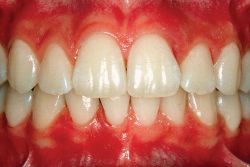Yan-Zhi X, Jing-Jing W, Chen YP, Liu J, Li N, Yang FY.
Department of Stomatology, the Fourth Hospital of Hebei Medical University, Shijiazhuang, China. xu_yanzhi[at]163.com

Abstract
AIM:
Tissue engineering is a promising area with a broad range of applications in the fields of regenerative medicine and human health. The emergence of periodontal tissue engineering for clinical treatment of periodontal disease has opened a new therapeutic avenue. The choice of scaffold is crucial. This study was conducted to prepare zein scaffold and explore the suitability of zein and Shuanghuangbu for periodontal tissue engineering.
METHODOLOGY:
A zein scaffold was made using the solvent casting/particulate leaching method with sodium chloride (NaCl) particles as the porogen. The physical properties of the zein scaffold were evaluated by observing its shape and determining its pore structure and porosity. Cytotoxicity testing of the scaffold was carried out via in vitro cell culture experiments, including a liquid extraction experiment and the direct contact assay. Also, the Chinese medicine Shuanghuangbu, as a growth factor, was diluted by scaffold extract into different concentrations. This Shuanghuangbu-scaffold extract was then added to periodontal ligament cells (PDLCs) in order to determine its effect on cell proliferation.
RESULTS:
The zein scaffold displayed a sponge-like structure with a high porosity and sufficient thickness. The porosity and pore size of the zein scaffold can be controlled by changing the porogen particles dosage and size. The porosity was up to 64.1%-78.0%. The pores were well-distributed, interconnected, and porous. The toxicity of the zein scaffold was graded as 0-1. Furthermore, PDLCs displayed full stretching and vigorous growth under scanning electronic microscope (SEM). Shuanghuangbu-scaffold extract could reinforce proliferation activity of PDLCs compared to the control group, especially at 100 microg x mL(-1) (P < 0.01).
CONCLUSION:
A zein scaffold with high porosity, open pore wall structure, and good biocompatibility is conducive to the growth of PDLCs. Zein could be used as scaffold to repair periodontal tissue defects. Also, Shuanghuangbu-scaffold extract can enhance the proliferation activity of PDLCs. Altogether, these findings provide the basis for in vivo testing on animals.
Source: Please visit source journal HERE





